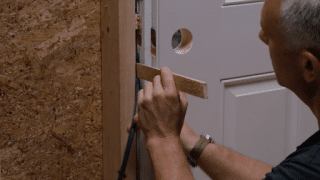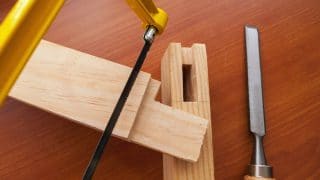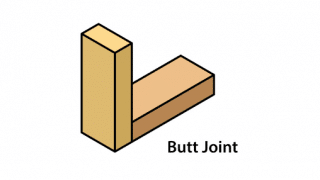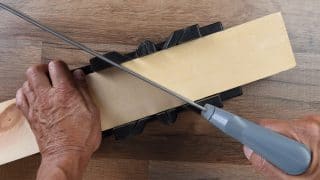
If you’re building your own cabinets or replacing existing hinges, there are endless hinge types to choose from. Although they vary in size and application, there are two main categories: traditional hinges and European hinges. A butt hinge is the most common traditional hinge style—it’s likely that the front door to your home is hung with a butt hinge. It is a sturdy, classic type of hinge that is easy to find at your local hardware store and simple to install.
What is a butt hinge?
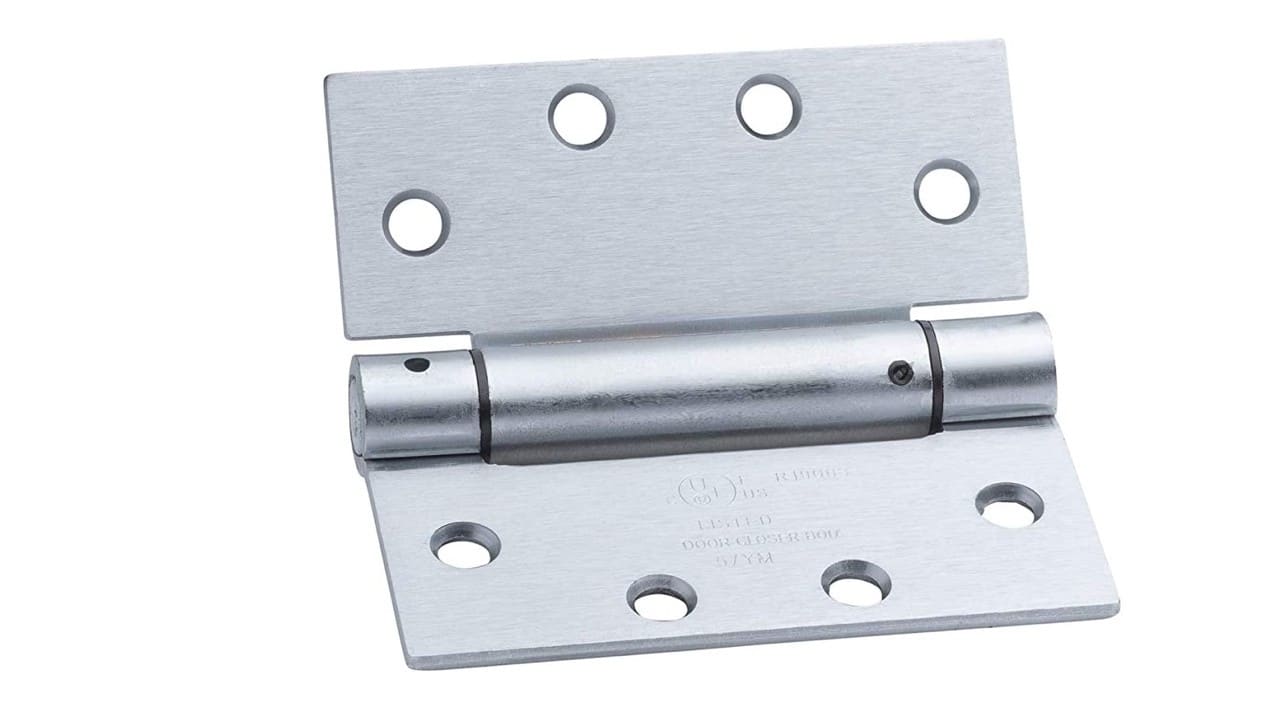
A butt hinge is a type of surface mount hinge that sits on top of the surface of the door material and does not need to be mortised or recessed to install. They are made of two mounting plates (also called leaves) and a barrel held together by a hinge pin. One of the plates mounts to the side of the cabinet box or door jamb and the other to the side of the door. When the door is closed, only the barrel is visible between the door and frame.
When to use a butt hinge
A butt hinge is a simple, durable, and reliable hinge option suitable for almost any type of door installation like cabinet doors, entry doors, and outside gates. They are also easy to install with no special tools.
Here’s when to use a butt hinge over another hinge type:
- When you need a heavy duty hinge that can handle the weight of a solid wood door or other heavy material.
- You need a door to be easily removable.
- You do not have the tools to carve the recess required by a mortise hinge type. (Though bear in mind that butt hinges for very large doors do require mortising.)
- If you prefer visible hinges over concealed hinges and are going for a more traditional look.
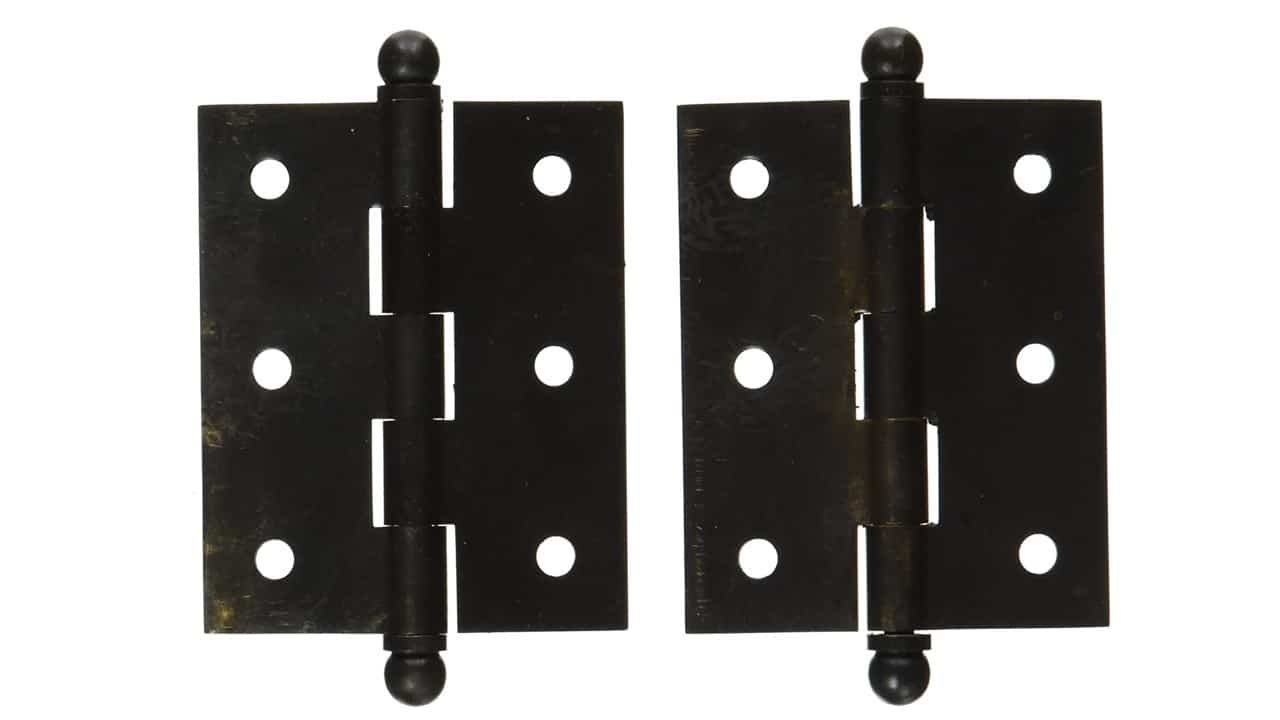
If you’re building your own cabinets or replacing existing hinges, there are endless hinge types to choose from. Although they vary in size and application, there are two main categories: traditional hinges and European hinges. A butt hinge is the most common traditional hinge style—it’s likely that the front door to your home is hung with a butt hinge. It is a sturdy, classic type of hinge that is easy to find at your local hardware store and simple to install.
What is a butt hinge?

A butt hinge is a type of surface mount hinge that sits on top of the surface of the door material and does not need to be mortised or recessed to install. They are made of two mounting plates (also called leaves) and a barrel held together by a hinge pin. One of the plates mounts to the side of the cabinet box or door jamb and the other to the side of the door. When the door is closed, only the barrel is visible between the door and frame.
When to use a butt hinge
A butt hinge is a simple, durable, and reliable hinge option suitable for almost any type of door installation like cabinet doors, entry doors, and outside gates. They are also easy to install with no special tools.
Here’s when to use a butt hinge over another hinge type:
- When you need a heavy duty hinge that can handle the weight of a solid wood door or other heavy material.
- You need a door to be easily removable.
- You do not have the tools to carve the recess required by a mortise hinge type. (Though bear in mind that butt hinges for very large doors do require mortising.)
- If you prefer visible hinges over concealed hinges and are going for a more traditional look.

Different types of butt hinge
Although butt hinges are most commonly used as a standard door hinge, there are types of butt hinges that offer special features and functions such as self-closing or removable barrel pins. They also come in different finishes like stainless steel, brass, or colored metals and with optional decorative details like a ball tip.
- Ball tip: A ball tip butt hinge functions exactly like a standard butt hinge but has an added decorative element at the top and bottom of the barrel. It’s a good option when you want more visible detail.
- Plain bearing: Plain bearing hinges do not have a ball bearing and are best used on an interior door, doors that get less use, and lighter weight doors.Ball bearing: A ball bearing hinge is ideal for high use doors because it offers smoother opening and closing even with constant use.
- Rising: Rising butt hinges lift the door slightly as it opens—perfect for doorways where there is a thick floor covering that prevents the door from opening and closing smoothly. They also make it very easy to pop the door off of the hinges as needed which can be handy for cabinet doors in garages and workshops when you need to store and access bulkier items.
- Self-closing or spring: In a self-closing hinge, a spring in the barrel pulls the door shut which is ideal for garage doors, screen doors, and other doors that should remain shut at all times.
- Removable or fixed: Removable pins make it easy to take the door off while fixed pins are harder to remove and therefore more secure—ideal if the door opens to the outside.
- Piano: A piano hinge is a continuous hinge that functions the same as a butt hinge but runs the entire length of the door. They get their name from their use on piano lids but are also handy for cabinet doors and any storage box with a lid.
- Strap: Strap hinges are a butt hinge variation where the plates are designed to be visible for a more decorative look.
If a butt hinge isn’t the right hinge for your project, there are many other hinge types that can help you get the job done. You can find specialty hinges like pivot hinges (for a door that swings both ways) or a completely concealed barrel hinge (for delicate projects like a handmade jewelry box). There’s a hinge for every type of door imaginable.
MT Copeland offers video-based online classes that give you a foundation in construction fundamentals with real-world applications, like building cabinets. Classes include professionally produced videos taught by practicing craftspeople, and supplementary downloads like quizzes, blueprints, and other materials to help you master the skills.


